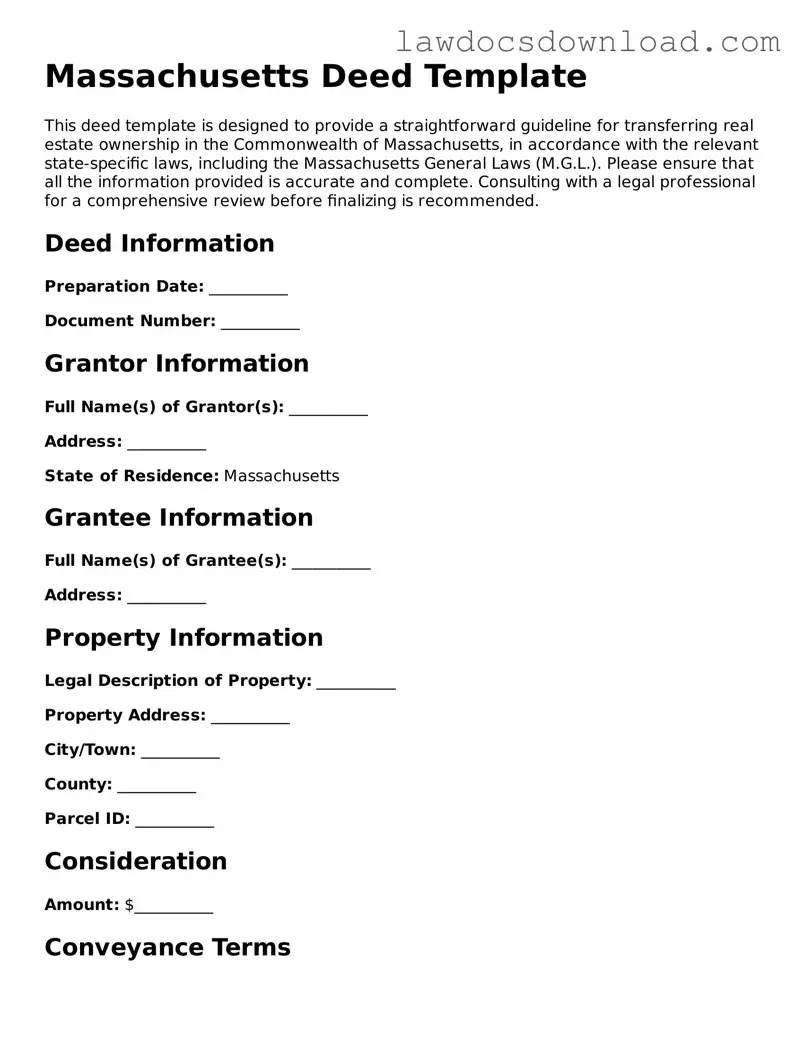Massachusetts Deed Template
This deed template is designed to provide a straightforward guideline for transferring real estate ownership in the Commonwealth of Massachusetts, in accordance with the relevant state-specific laws, including the Massachusetts General Laws (M.G.L.). Please ensure that all the information provided is accurate and complete. Consulting with a legal professional for a comprehensive review before finalizing is recommended.
Deed Information
Preparation Date: __________
Document Number: __________
Grantor Information
Full Name(s) of Grantor(s): __________
Address: __________
State of Residence: Massachusetts
Grantee Information
Full Name(s) of Grantee(s): __________
Address: __________
Property Information
Legal Description of Property: __________
Property Address: __________
City/Town: __________
County: __________
Parcel ID: __________
Consideration
Amount: $__________
Conveyance Terms
This deed is executed in accordance with the laws of the Commonwealth of Massachusetts and conveys the described property from the Grantor(s) to the Grantee(s), warranting a clear title free of any liens, encumbrances, or defects, except as otherwise noted herein.
Signatures
The parties have executed this deed on the date(s) specified below:
Grantor's Signature: __________
Date: __________
Grantee's Signature: __________
Date: __________
Acknowledgement
This document was acknowledged before me on __________ (date) by __________ (name of person acknowledging).
Notary Public Signature: __________
Commission Expires: __________
